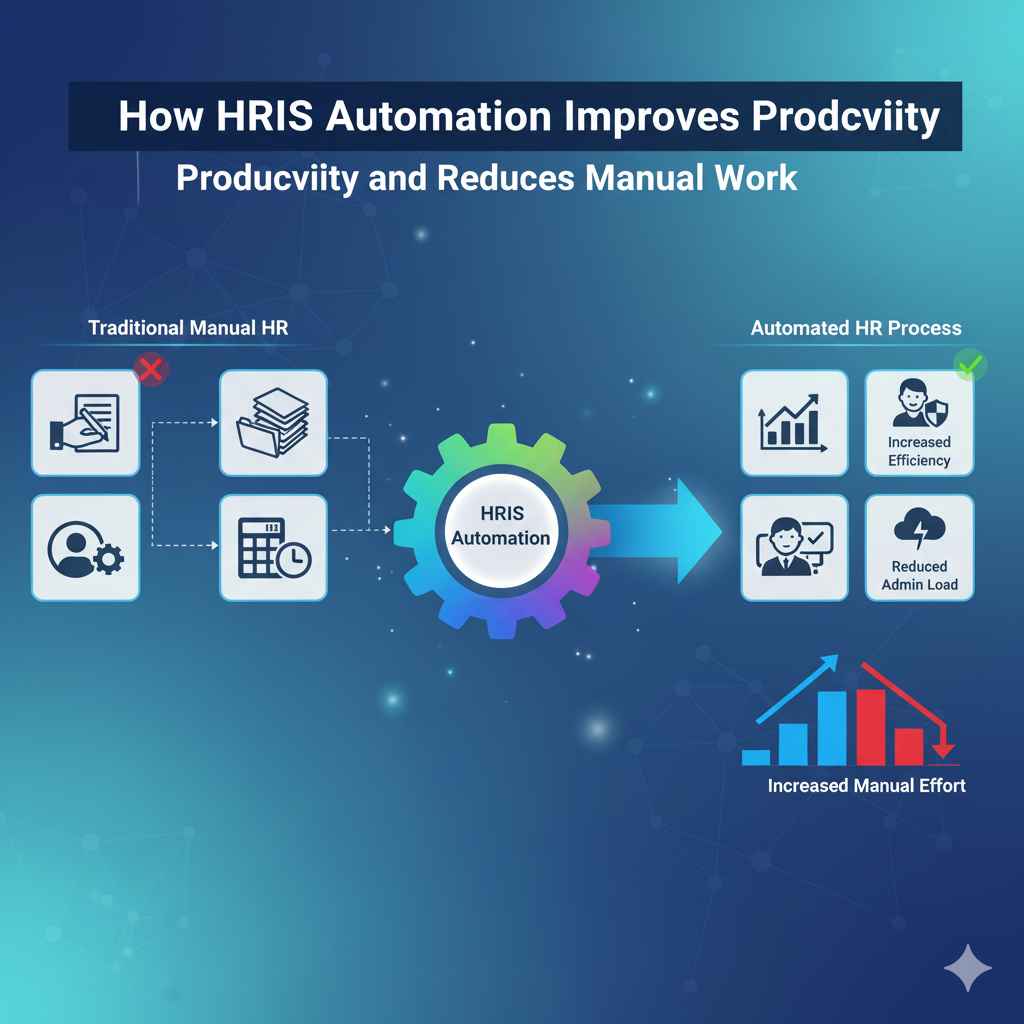In today’s fast-paced business environment, Human Resource Information Systems (HRIS) have become essential tools for efficient workforce management. HR professionals are under constant pressure to manage data, streamline operations, and deliver a better employee experience—all while minimizing manual work.
That’s where HRIS automation steps in. By automating repetitive HR tasks such as payroll, attendance tracking, and onboarding, companies can significantly reduce administrative burdens and improve overall productivity.
In this article, we’ll explore how HRIS automation works, its key benefits, and how it empowers HR teams to focus on what truly matters—people.
What Is HRIS Automation?
HRIS automation refers to the use of technology to streamline and manage HR functions through a centralized digital system. Instead of handling paperwork or spreadsheets, HR staff can perform tasks like leave management, performance tracking, and payroll processing automatically within a secure HRIS platform.
Modern HRIS platforms—such as PinoyCode HRIS & Payroll System and SAP SuccessFactors—integrate automation tools that eliminate repetitive administrative tasks and ensure accuracy, compliance, and efficiency.
Key HR Tasks Automated by HRIS
Automation within an HRIS can touch almost every area of human resources. Some of the most common tasks include:
- Payroll Processing
Manual payroll management can be time-consuming and error-prone. HRIS automation calculates salaries, deductions, and benefits automatically—ensuring timely and accurate payments. - Attendance and Leave Management
Automated tracking of attendance, overtime, and time-off requests ensures real-time visibility and eliminates the need for manual recordkeeping. - Employee Onboarding
New hires can complete onboarding forms, upload documents, and receive training materials directly through the portal—creating a seamless first-day experience. - Performance Management
HRIS systems automate goal-setting, performance reviews, and feedback collection, making performance tracking continuous and transparent. - Recruitment and Applicant Tracking
Automated applicant tracking systems (ATS) help HR teams manage job postings, applications, and candidate evaluations efficiently.
How HRIS Automation Improves Productivity
- Saves Time on Repetitive Tasks
Automating routine processes like payroll, benefits updates, and attendance tracking saves hours of manual data entry, freeing HR teams to focus on strategic initiatives. - Enhances Data Accuracy
Human errors in data entry can cause compliance risks and inefficiencies. HRIS automation ensures consistent, accurate data processing across all HR functions. - Improves Decision-Making
With centralized, real-time data dashboards, HR leaders can make faster and better-informed decisions based on accurate analytics and reports. - Strengthens Employee Engagement
When employees can manage their profiles, request leaves, and access payslips through a self-service HR portal, they feel empowered and more connected to the organization. - Enables Scalability
As businesses grow, HRIS automation allows teams to handle increased workloads without needing proportional staff increases.
Reducing Manual Work Through HRIS Automation
Traditional HR workflows often rely on spreadsheets, paper forms, and endless email chains. HRIS automation replaces these manual processes with digital workflows that improve speed and consistency.
For example:
- Instead of sending manual reminders, automated notifications alert managers about pending approvals.
- Instead of updating employee data manually, integrated systems sync updates across payroll, benefits, and compliance modules.
The result? Fewer errors, faster processing, and happier HR teams.
Top Benefits of HRIS Automation
| Benefit | Impact |
| Time Efficiency | Reduces administrative workload and accelerates HR operations. |
| Cost Savings | Lowers operational costs by cutting redundant manual tasks. |
| Data Security | Protects sensitive employee data with advanced encryption and access controls. |
| Compliance Management | Automates recordkeeping to meet labor and tax regulations. |
| Employee Empowerment | Gives employees control over personal data and HR processes. |
Best Practices for Implementing HRIS Automation
To get the most from your HRIS investment, consider the following best practices:
- Define Clear Objectives
Identify which HR processes you want to automate and set measurable goals—such as reducing payroll errors or cutting processing time. - Choose the Right HRIS Platform
Select a system that aligns with your company size, budget, and integration needs. Look for features like cloud access, reporting tools, and self-service portals. - Train Your HR Team
Ensure HR staff understand how to use automation tools effectively to maximize productivity gains. - Communicate with Employees
Encourage adoption by explaining how automation benefits employees—such as faster approvals and easier access to information. - Monitor and Optimize
Regularly review HRIS performance metrics and gather feedback to fine-tune automation workflows.
Conclusion
HRIS automation is not just about reducing paperwork—it’s about transforming how HR operates. By automating daily HR tasks, organizations can boost productivity, enhance data accuracy, and improve employee satisfaction.
As the workplace becomes increasingly digital, HR teams that embrace automation will be better equipped to lead their organizations toward efficiency, compliance, and long-term success.

